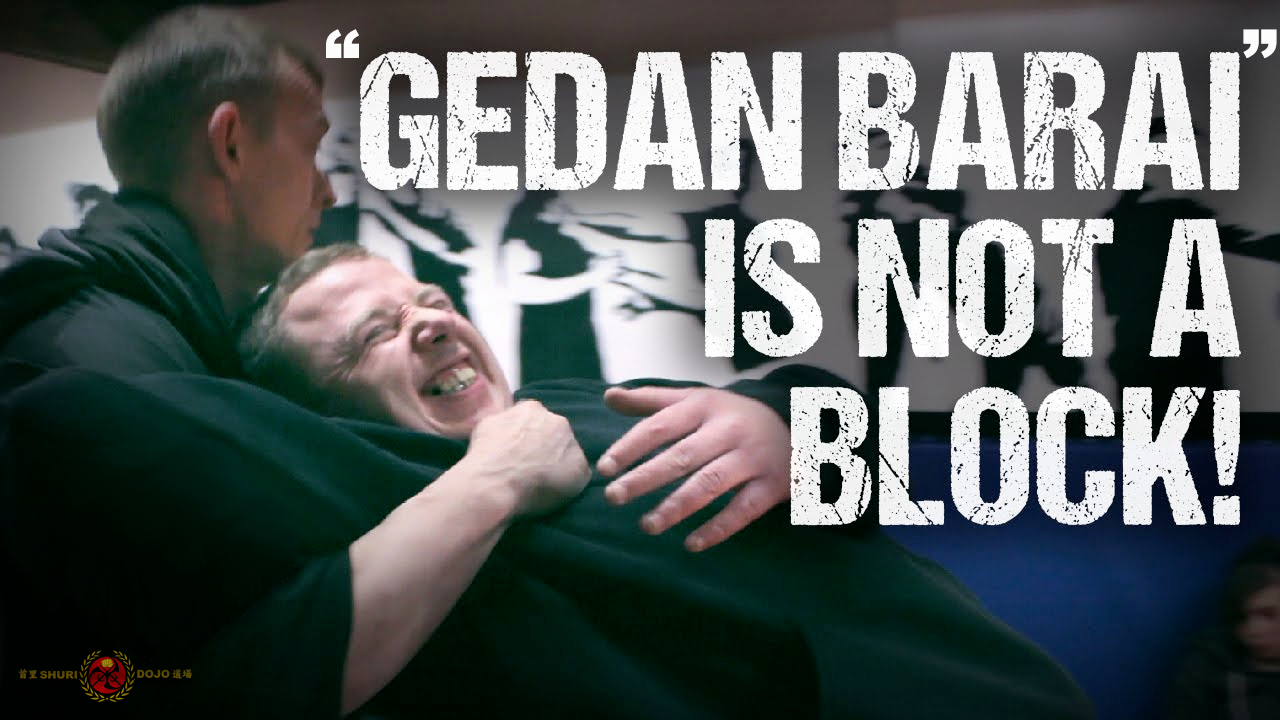
Karate “blocks” only work in a predefined attack….. Shock, horror….you mean my karate blocks won’t work in a spontaneous attack?
.
Action is always faster than reaction even when you’re anticipating it. When you’re reacting your brain goes through what could be described as a “defensive reaction cycle”; perception, evaluation and reaction. That takes time. The attacker will always have a slight advantage in that regard, especially in a close quarter, sudden, aggressive assault. This is pure human physiology.
.
The “action” part is initiated by the attacker at a time of their choosing. This is why action will always be faster than reaction, even if it’s only a millisecond of difference.
.
Situational Awareness and paying attention to pre-assault cues however, can help you reduce the time difference between “action and reaction.”
.
But it is also accurate to say that blocks are ineffective, because they are not blocks at all.
.
One of the most commonly mistranslated and misunderstood words in karate is “uke.” Despite the familiarity of the word, most karateka will erroneously say that “uke” means “block.” This is something that has been deeply ingrained in karate culture – so much so, that even people who know what the word actually means will still say “block” when speaking about it in English.
.
The word “uke” is actually a shortened form of the word “ukeru,” which means “to receive.”
.
A movement has a shape, and we hang a name (uke, tsuki etc) on that shape, but then we get hung up on the name, and fail to see what that shape could also be.
.
The problem with “blocking” is that the success of the “block” is largely dependent upon having predetermined knowledge of an attack. For example, if both partners agree that a straight punch will be executed, almost any blocking technique can be used to stop/deflect/parry etc, as in ippon/sanbon/gohon kumite.
.
However, as soon as an undetermined strike or series of strikes are executed, the defender’s ability to successfully block the attacks WILL decrease exponentially.
.
I believe that the originators of karate understood principles such as action vs. reaction, and the flinch response, and they had a working knowledge of the autonomic nervous system. Okinawan Karate has always been an art very much focused on close-quarter combat and limb control. It is not surprising then, that a group of its fundamental techniques called “uke” (receiving), transitions directly to limb control, takedowns and control. The original term conveys the proper meaning, so let’s not ignore it for the sake of simplicity and misunderstanding. ![]()
![]()
.
.
![]() Photo Credit: MEME Self Defense systems. With thanks to Noah Legel Karate Obsession
Photo Credit: MEME Self Defense systems. With thanks to Noah Legel Karate Obsession
.
